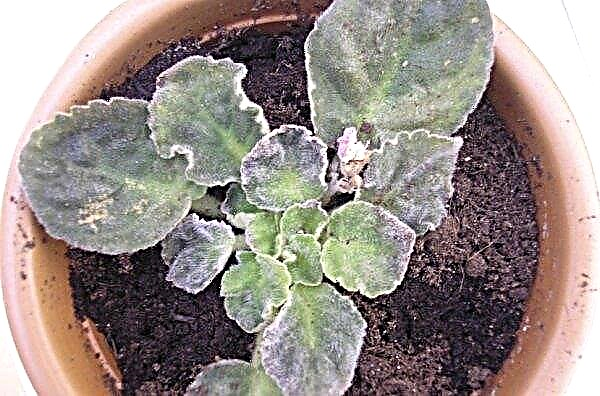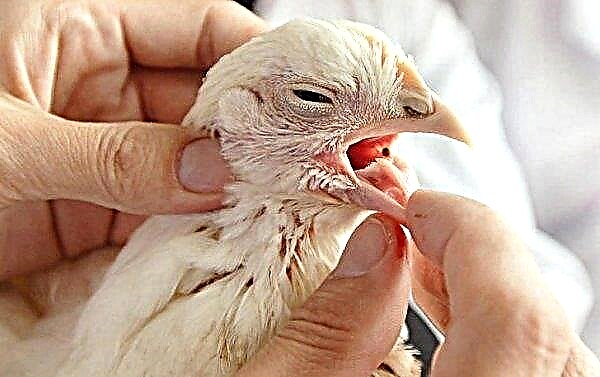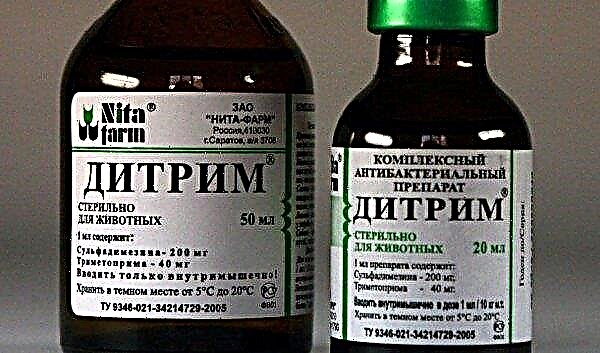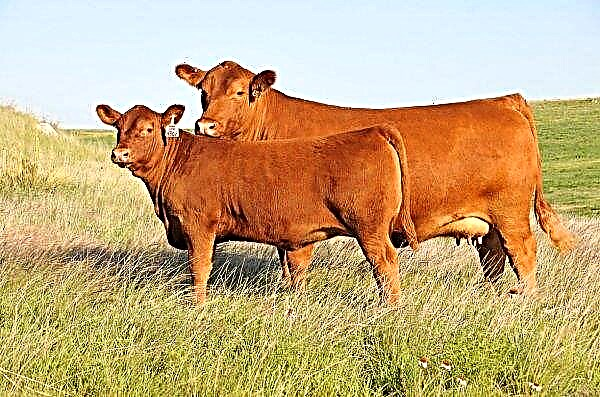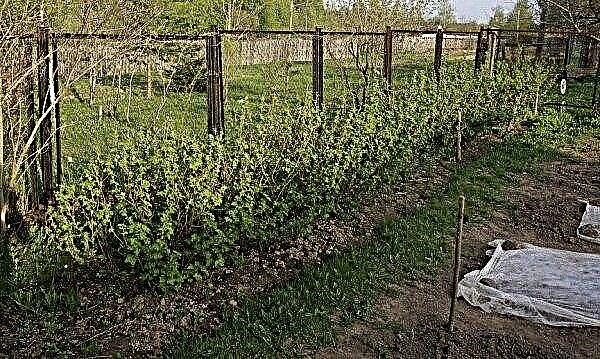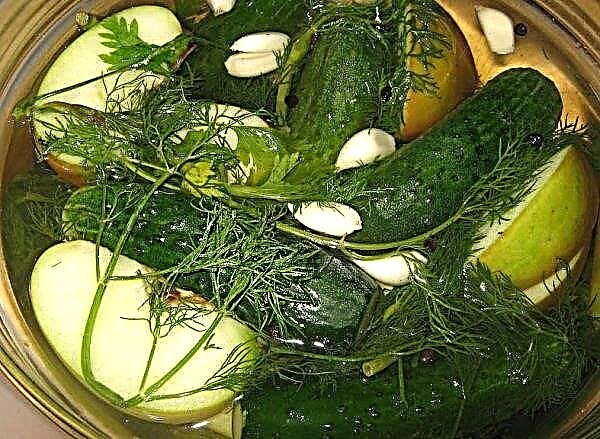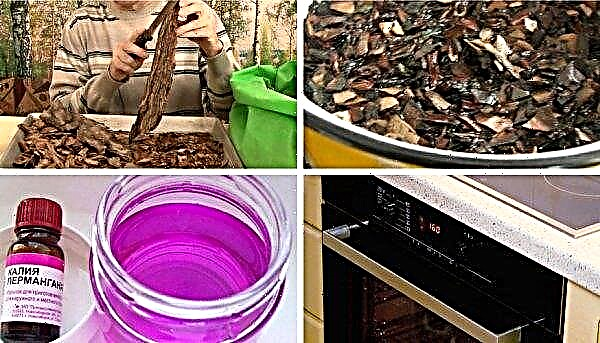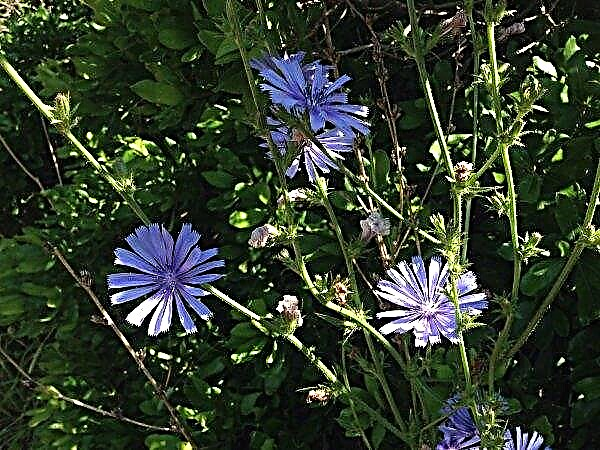Carrots, an indispensable vegetable in the garden of any gardener. Variety of carrots Laguna F1, has excellent taste and unpretentious care. About the characteristic features of the variety, planting technology, can be read below.
Origin of the variety
Carrot variety Laguna F1, bred from the Nantes-4 variety, at the All-Russian Scientific Research Institute for Vegetable Breeding and Seed Production in 2007. The culture is hybrid, therefore, with subsequent sowing of seeds, its characteristics can change.
Did you know? In 2007, scientists from Scotland, David Hepworth and Eric Keith, invented an environmentally friendly material from the fibers of carrot root, called Karan. The material was used to make fishing rods and snowboards.
Grade description
Carrots, is a two-year-old plant, belongs to the class dicotyledonous, the family is umbrella. Leaves - pinnate, green. Flowers, in the form of cups, with small cloves, white. Inflorescences are presented, in the form of an umbrella, can contain up to 15 flowers on long rays. Seeds are small, reaching a length of 5 mm. The shape is round, elliptical. This variety is a hybrid, therefore, when re-sown (from seeds obtained from the primary harvest), its characteristics change
This variety is a hybrid, therefore, when re-sown (from seeds obtained from the primary harvest), its characteristics change
- Among the advantages of the variety, we can distinguish:
- seeds are used for winter sowing;
- fast germination;
- high yields;
- has a high resistance to diseases.
- The disadvantage is:
- short shelf life of vegetables, which is typical for all early varieties of carrots.
Landing Region
Planting varieties Laguna F1, can be carried out in regions with moderate climatic characteristics. Vegetable can be cultivated in Ukraine, Moldova, Belarus and the Central region in Russia.
Did you know? To preserve the beautiful color of the cat’s coat with a red color, 50 g of carrots should be included in its daily diet.
Ripening time
The culture is early ripening, the germination of carrot seeds begins on the 10th day, after planting. Its ripening period is 80 days, during this period it ripens to 90% of the crop.
Fruit Description
Vegetable, has an oblong, cylindrical shape. Carrots reach up to 27 cm in length and 3 cm in diameter. The fruits are smooth, without bends or defects. The color is bright orange, weight up to 130 g. Fruits have a sweet taste. The core is small; it may be completely absent in medium-sized vegetables.
Productivity
Productivity is high, averaging 5-6 kg per m². Subject to all the rules of planting and caring for the crop, it is possible to achieve higher rates of harvesting vegetables - up to 8 kg. Productivity may fall due to lower soil temperatures after planting seeds in the soil to -1 ° C.
We recommend that you familiarize yourself with early varieties of carrots:
Landing and care
2 weeks before the planned planting of vegetables, it is necessary to prepare the soil. Soil on the site is loosened to a depth of 30 cm, while mineral fertilizers are applied. For 1 m², 100 g of superphosphate is required. Hybrid Laguna F1, is grown by sowing seeds in the soil, for which they make shallow furrows up to 4 cm. For manual planting, it is recommended to harvest shallow furrows (up to 4-5 centimeters in width). From above the seeds are covered with earth, optionally they are mulched with peat
For manual planting, it is recommended to harvest shallow furrows (up to 4-5 centimeters in width). From above the seeds are covered with earth, optionally they are mulched with peat
Place and date
Sowing is done in spring or autumn, depending on the preference of the gardener. Winter sowing is carried out from mid-October to early November, at a time when the air temperature will be at + 5 ° C, but not lower than 0 ° C. In the spring, sowing of seeds is carried out in late April to mid-May. Carrots are very picky about the soil.
Important! In spring, carrots are planted at a time when the air temperature will be stably high from + 15 ° C during the day and + 8 ° C at night, because if the seeds lie in cold soil, they can germinate for a very long time.
Best of all, the vegetable grows on loamy soils with a high humus content. The soil for cultivation must also be loose, breathable, with a neutral pH level. Landing area should be well-lit, spacious. Shaded areas should be avoided. The culture grows well after: tomato, cucumbers, onions, cabbage. 
Seed preparation
If the seeds of Laguna F1 carrots are in the package, no pretreatment is required before sowing, because the planting material has already been processed with substances that protect them from diseases. If sowing is carried out from seeds that were collected independently, preparation is required. First, planting material is sorted, removing damaged or moldy seeds.
For disinfection, the seeds are placed in a slightly pink solution of potassium permanganate for 5-6 hours. Further, the planting material must be hardened, for which the seeds are placed on a damp cloth in a cold place. This will accelerate germination, upon returning to a warm environment.
Sowing pattern
In order to sow carrot seeds, it is necessary to make grooves in the ground, to a depth of 3-4 cm. Seeds are sown at a distance of 4 cm from each other, 15 cm must be retreated between rows. After sowing, the furrows are buried.
Video: planting carrot seeds
Watering
Watering should be regular, 2 times a week. Before germination, carrots are watered with 3 liters of water per m², after germination, the amount of liquid is increased to 5 liters. After watering and rain, it is necessary to loosen the soil near the plant in order to saturate the soil with oxygen and not allow an excess of moisture to provoke the development of fungus and rot.
Pest and Disease Control
In conditions of high humidity, the plant may be affected by septoria. This is an infection that affects the leaf plates of a plant. The primary source of the disease is infection transmitted by seeds. Septoria, manifests itself in the form of white spots on the leaves. To combat the disease, you need to 2 times irrigation with a solution of copper sulfate 1% (100 g per 10 liters of water). Spraying is carried out when spots appear on the leaves and after 10 days, after the first treatment. The product is used in an amount of 1 liter per m².
Most often, aphids attack culture. It is a small green insect that reaches a length of 5 mm. Aphids settle on carrot stems, from which the juice is sucked. The leaves curl, fade, and root crops are poorly formed and stop in development.
Anti-aphid measures:
- Manual cleaning of damaged leaves and their burning.
- Soap-ash irrigation with 300 g of soap, 300 g of ash per 10 l of warm water. Irrigation is carried out within 2-3 days.
Harvesting and storage
Harvested in several stages, starting from the 80th day of growth of 120. For better preservation, the tops are cut at a distance of 3 cm from the base of the vegetable. This variety is stored for 5 months in the basement at a temperature of + 5 ° C. For better preservation, carrots are placed in wooden boxes with sand.
Important! Vegetables gently pulled out of the soil, holding the tops. Digging up root vegetables is not recommended, because of the risk of injury.
Variety Laguna F1 is an excellent early ripe hybrid that vegetable lovers will like for their sweet taste. Cultivation is not difficult, subject to all the rules of planting and care, you can get a rich harvest.


